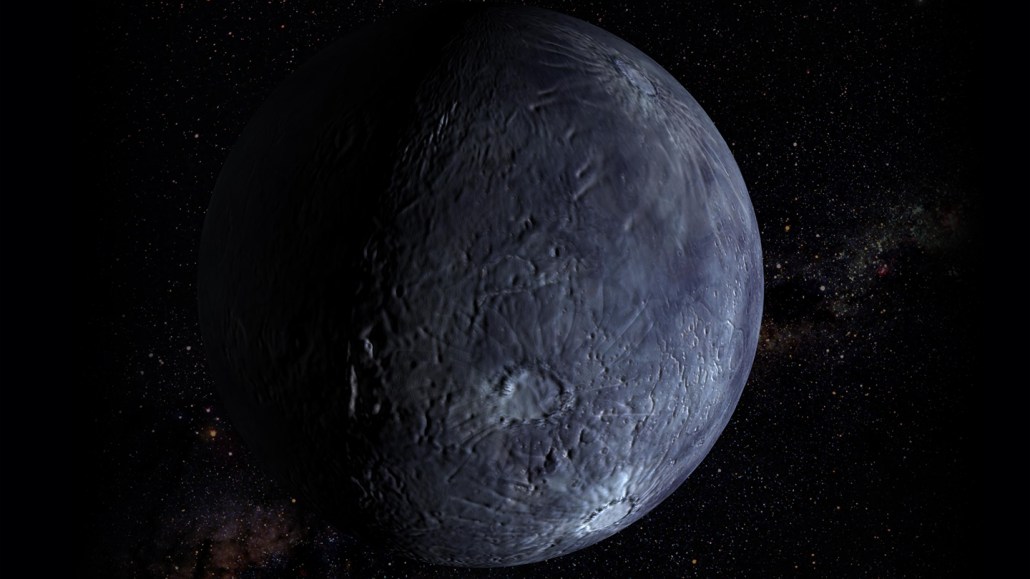
Dwarf planet Quaoar, shown in this artist's illustration, is only the third small object in the solar system with a known ring.
Illustration Credit: NASA, G. Bacon/STScI; Science Credit: NASA, M. Brown/Caltech

Dwarf planet Quaoar, shown in this artist's illustration, is only the third small object in the solar system with a known ring.
Illustration Credit: NASA, G. Bacon/STScI; Science Credit: NASA, M. Brown/Caltech